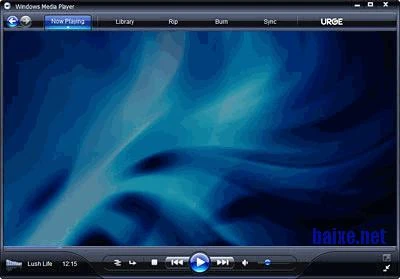Windows Media Player 11.2503.5.0
Native multimedia player from Microsoft, integrated into Windows, which supports various audio and video formats.
Old versions
See all old versionsDescription
Windows Media Player (WMP) was introduced by Microsoft in 1991, initially as a basic player called "Media Player." Over time, it evolved into a more robust tool, gaining features such as support for various audio and video formats, including popular codecs like MP3, WMA (Windows Media Audio), WMV (Windows Media Video), and even CDs and DVDs in older versions. It became a standard component of Windows, especially from Windows 98 onwards, being widely used for its native integration into the operating system.
In addition to media playback, WMP offers functionalities such as the creation and management of libraries, where users can organize music, videos, and photos into personalized collections. It also supports file synchronization with portable devices, such as MP3 players, and includes options for burning CDs in older versions. The interface is intuitive, with graphic visualizations that sync with the rhythm of the music, a feature that attracted many users for its aesthetic and interactive appeal.
In the latest versions, such as Windows 10 and 11, Windows Media Player has been partially replaced by the "Movies & TV" app and "Groove Music" for some functions, but it is still available as "Windows Media Player Legacy." Despite this, it maintains a base of nostalgic users and is valued for its simplicity and lightweight nature. Although it no longer receives significant updates, WMP remains a reliable option for those who prefer a basic multimedia solution without relying on third-party software.
Screenshot

Technical Specifications
Version: 11.2503.5.0
Size: 22.48 MB
License: Free
Language: Portuguese
Platform: Windows
File Type: EXE
SHA-256: 771ab09969eb3342088eba7d4fc1608a3ee7d45e9a6328f5eda6b591597ba4a3
Developer: Microsoft
Category: Multimedia/Audio and Video Players
Last Update: 04/23/2025Related
JRiver Media Center
An advanced multimedia center packed with powerful features.
AIMP Skin Editor
Software that allows you to create and customize skins for the AIMP player.
foobar2000
Audio player for Windows with advanced features.
PotPlayer
Audio and video player with customizable features and high-definition quality.
AIMP
Free, lightweight, and customizable audio player that offers high sound quality and flexibility.
AIMP Portable
Portable version of AIMP, a player with a visually appealing interface, lightweight, and with innovative features.